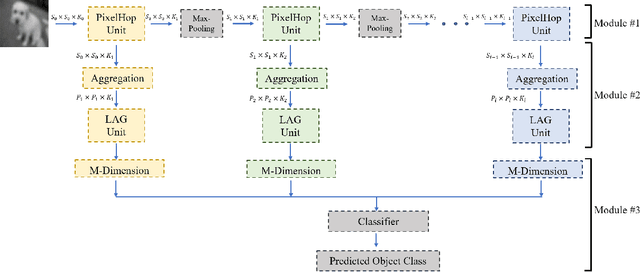PixelHop: A Successive Subspace Learning (SSL) Method for Object Classification
Paper and Code
Sep 17, 2019



A new machine learning methodology, called successive subspace learning (SSL), is introduced in this work. SSL contains four key ingredients: 1) successive near-to-far neighborhood expansion; 2) unsupervised dimension reduction via subspace approximation; 3) supervised dimension reduction via label-assisted regression (LAG); and 4) feature concatenation and decision making. An image-based object classification method, called PixelHop, is proposed to illustrate the SSL design. It is shown by experimental results that the PixelHop method outperforms the classic CNN model of similar model complexity in three benchmarking datasets (MNIST, Fashion MNIST and CIFAR-10). Although SSL and deep learning (DL) have some high-level concept in common, they are fundamentally different in model formulation, the training process and training complexity. Extensive discussion on the comparison of SSL and DL is made to provide further insights into the potential of SSL.
 Add to Chrome
Add to Chrome Add to Firefox
Add to Firefox Add to Edge
Add to Edge